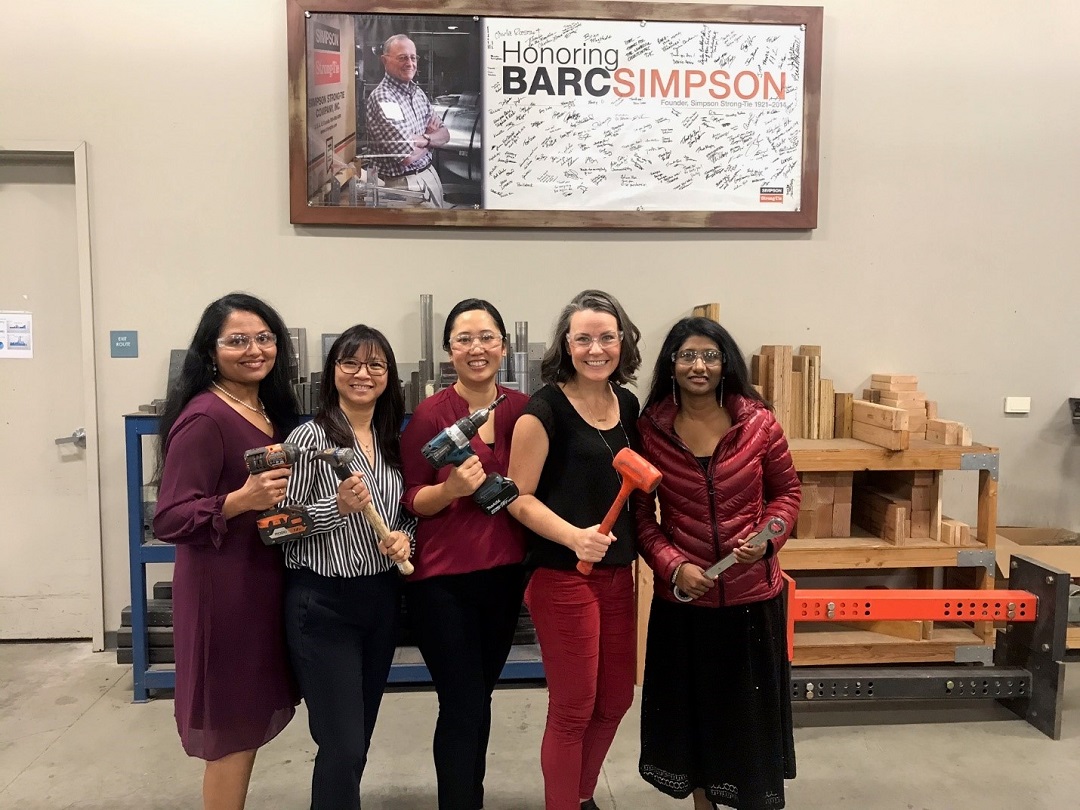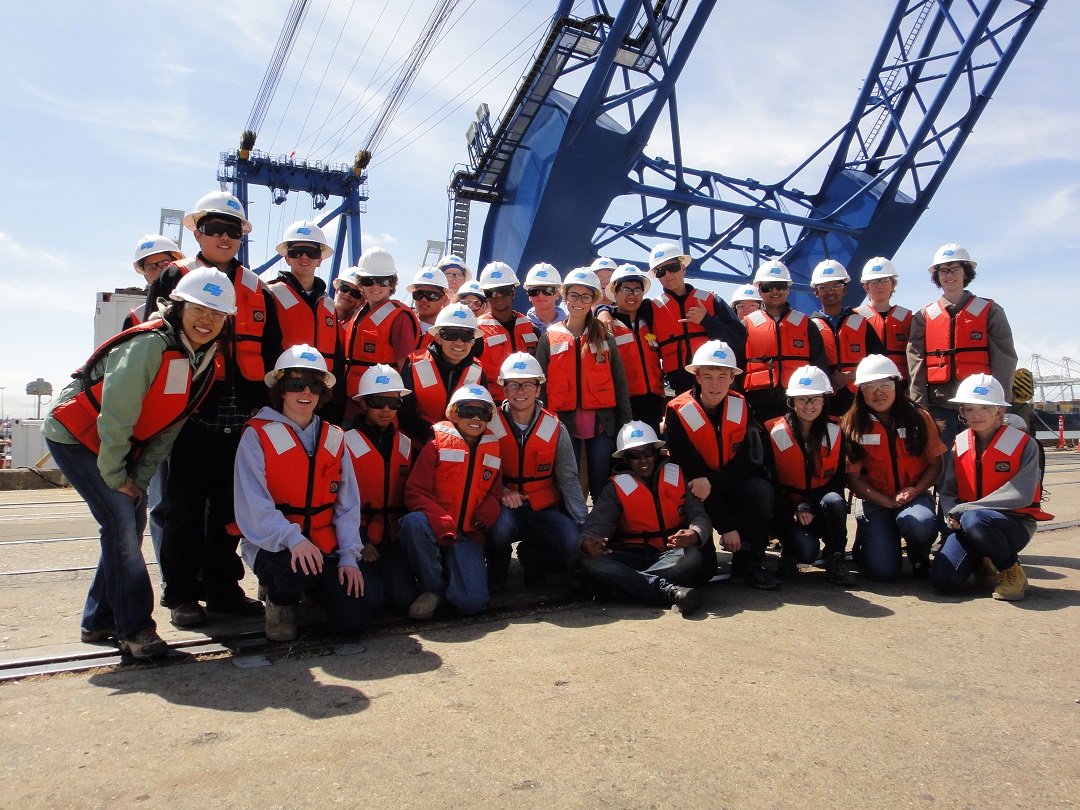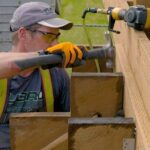March 8, 2022 is International Women’s Day. This year’s theme is “Break the Bias” which asks participants to imagine a gender equal world. Simpson Strong-Tie Engineering Supervisor for the Southwest United States, Rachel Holland, shares her story of being a woman in engineering and how she works to create change in her field by mentoring young women interested in STEM.
When I was young, no one mentioned how rare female engineers were. Perhaps I didn’t do my research to figure that out on my own. In fairness, though, there tended to be an equal number of female and male students in the classes I took in high school. However, by day one as an architectural engineering freshman at Cal Poly SLO, I could already tell the vast majority of my classmates for the next five years were going to be boys. Therefore, that was a big change — and a telling clue about my future career path.

Indeed, for all the progress women have made in the workplace, meeting another woman in the engineering field still seems like a bit of a rarity. In the past, I have worked at consulting firms in which my only female coworkers have been in HR, finance, or administrative positions. At Simpson Strong-Tie, seeing CEO Karen Colonias in her leadership roles has always been very encouraging to me. It was something that attracted me to the company 11 years ago! Now I look at Annie Kao, our vice president of Engineering, with the same admiration. The late US Supreme Court Justice Ruth Bader Ginsburg said, “Women belong in all places where decisions are being made. It shouldn’t be that women are the exception.” Having an inclusive work environment like this, where people see others like themselves succeeding, helps to attract and retain the best employees.

The NCSEA Structural Engineering Engagement and Equity Committee (SE3) conducted its third nation-wide survey of structural engineers in the United States from April to June of 2020 in an ongoing effort to identify trends and better understand the underlying factors that affect the engineering profession. These two stood out to me as being applicable to International Women’s Month:
- 24% of the respondents were women, indicating only about 24% of the structural engineers in US are female.
- There are fewer women at higher positions: 37% of Staff/Entry respondents are female compared to 10% of Principal/Owner respondents.
The Society of Women Engineers (SWE) published SWE Research Update: Women in Engineering by the Numbers (in 2019). While their study covers a broader range of engineering disciplines, not just structural, they found that only 13% of engineers in the workplace are women. Their research showed that 32% of women switch out of STEM degree programs in college and only 30% of women who earn a bachelor’s degree in engineering are still working in engineering 20 years later.

But I think a change is underway. Mentoring for Dublin High School’s Engineering academy has given me an opportunity to work with young females aspiring to careers in engineering, and I am happy to report I have had a first-hand glance into how the ratios of girls to boys interested in engineering careers are slowly changing. No doubt, the gap is still large, but it is visibly shrinking and this is encouraging to me. To quote Ruth Bader Ginsburg again, “Fight for the things that you care about, but do it in a way that will lead others to join you.”

Mentoring younger female students, talking to them about their career paths, and acknowledging that they may face some discrepancies and difficulties along the way — all this has been an enriching experience for me. During all of these conversations, I am able to reiterate that it is worth the fight. I am encouraging them to continue on the less-traveled path and reminding them that in addition to pursuing their dreams, they are also helping to pave the way for future generations of girls and women. As more and more women are encouraged to pursue their engineering interests and shown that they can succeed in this field, the gap will continue to shrink!






